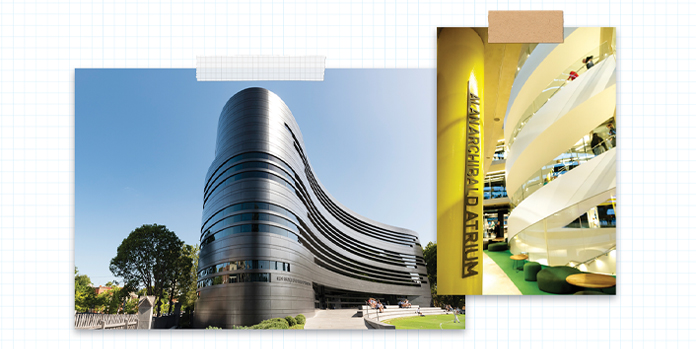A school building is much more than a collection of classrooms. I believe that if we take the culture and aspirations of a school into account when we design a learning space, it can become a site that tells us what matters to the entire school community.
From an Indigenous perspective, there is, of course, a synergistic relationship between people and land. Our First Nations peoples see themselves as the carers and custodians of the places they inhabit, and understand that if they care for the land, the land cares for them.
We can think about these ideas in the context of our School, our buildings, and our built environments. We can begin to consider that a building sends messages about how we contribute, how we engage with one another, and how we can do that with a sense of care.
Melbourne Grammar’s newest building, the Geoff Handbury Science and Technology Hub, is one example of a space that tells an important story to the people who work and study there. This building was in its planning stages when I joined the School, and I was glad to be able to contribute to some of the decisions that went into making it the inspiring learning space it is today.
Some of these decisions may seem superficial at first, but they all go toward creating an environment where learning and teaching are truly supported. For example, the right temperature and lighting mean students and teachers are immediately comfortable. Taking the time to test the acoustics of a room, and the level of noise that leaks between classrooms, also makes an important difference to concentration and focus. Even our choice of colour palette, and the way we design the flow of movement between classrooms, can mean students arrive at their next class calm and ready to learn.
I see a considered building as one that supports the relationships between the people in it. When we look at a learning space we can ask: Does this place reinforce a sense of being part of a greater whole? Are there spaces that allow people to gather and connect with others, including those who are not part of their immediate group or year level?
In all these ways, a building communicates the culture of the people who built it. Most recently, our School has been designed around a cultural message of openness, with decisions made to ensure we can see the wider world beyond our gates. Through decisions like these, we reinforce a culture that is not walled off from the real world, but connected to it as its custodians and carers.
Andrew Baylis
Director of Learning and Research
About Andrew Baylis
Andrew Baylis (OM 1979) has held the position of Melbourne Grammar School’s Director of Learning and Research since 2014.
Prior to this, his appointments included Executive Director of the Crowther Centre, Director of Teaching and Learning at Brighton Grammar School, and Head of Physics at both Henry Box School in the UK and St Bernard’s College.



